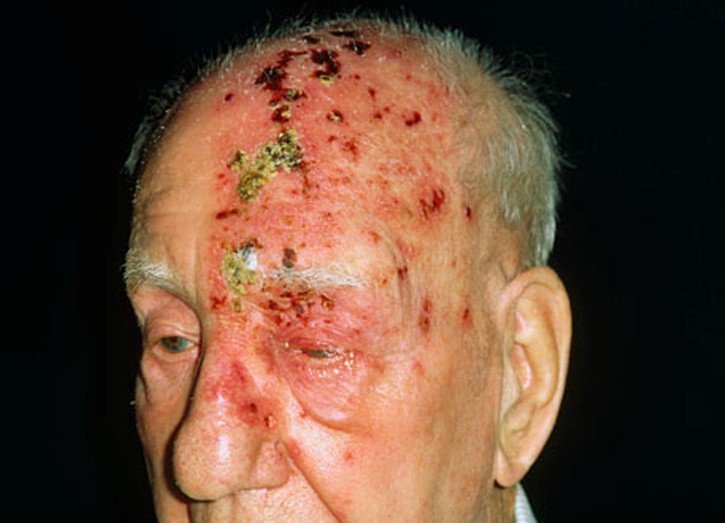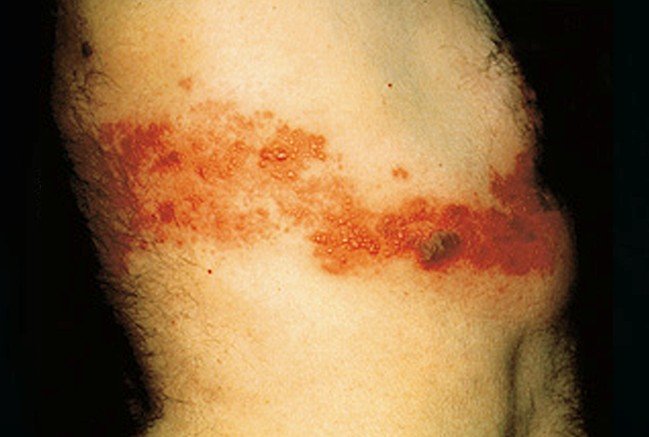Postherpetic Neuralgia
What is Postherpetic Neuralgia?
This is a medical condition that affects your skin and nerve fibers. The pain that is associated with this medical condition could be so strong that it interferes with your appetite and sleep. The risk of developing postherpetic neuralgia increases as a person ages and will usually hit a person who is older than sixty years of age. It can hit either gender. When you see the word, “neuralgia” it means the nerve pain that happens when a nerve is inflamed or irritated with the pain ranging from mild to being unbearable and happening briefly or being a chronic pain.
Postherpetic Neuralgia Symptoms
When you have postherpetic neuralgia the symptoms are usually limited to the area of your body where you had your outbreak of shingles. This area is usually on just one side of your body and is commonly found in a band around the trunk of your body.
Some of the common symptoms can include:
- Pain which can be sharp and jabbing, aching and deep, or burning
- Being sensitive to light tough which can be as simple as not being able to stand your clothes touching the area of the skin that was subjected to shingles. This condition is called allodynia.
- Numbness and itching – these two symptoms can produce numbness or an itchy feeling but these symptoms are not as common as other symptoms
- Having paralysis or weakness – these symptoms usually happen in only rare cases but you could experience weakness in your muscles or even paralysis if your nerves that are involved control the movement of your muscles.
Causes of Postherpetic Neuralgia
Getting postherpetic neuralgia is a shingles complication. It is caused by the chickenpox virus. This virus is called herpes zoster. Most of the time when a person gets shingles it will clear up and go away within a few weeks but if there is pain that is long lasting after the blisters and rash have gone away you could have postherpetic neuralgia. Approximately twenty to thirty percent of the people who have had a shingles outbreak will go on to have this combination.
Some of the factors/causes of postherpetic neuralgia can include:
- Being over the age of fifty.
- Being of the female gender.
- Having the presence of symptoms like tingling, pain, numbness, or itching that happen before you get the rash.
- How severe the rash is with your case of shingles.
- During the beginning of the shingles outbreak, how bad your pain was.
- You can be stressed out.
The reason that a person has outbreaks of shingles is that after you have had chickenpox, the virus remains dormant in your body until something triggers it to wake up and cause an outbreak of shingles. When you have an outbreak of shingles it can damage your nerve fibers causing them to be unable to send any messages from your skin to the brain like they usually do. Since the nerves cannot transmit the messages the normal way it causes the messages they are trying to send to become exaggerated and confused. This is what causes the pain, associated with postherpetic neuralgia, which can be chronic and last for months, maybe even years.
Treatment
Basically, at this time there is no cure for postherpetic neuralgia but there are ways to treat it and help you deal with the pain. Overtime, the postherpetic neuralgia will improve for most people who are suffering from this medical condition.
Some of the treatments that a physician can use include:
Skin patches with Lidocaine – these patches have a pain-relieving topical medication and can be cut to fit on just area that is affected. You can only get these with a prescription. They will give you temporary relief when you apply them directly to the skin.
Skin patches with Capsaicin – on these patches you will find a high concentration of capsaicin, which is an extract of the chili peppers. This can be effective in relieving the nerve pain associated with this medical condition. You can get a low-concentration of this cream over-the-counter. It will help to improve the pain over a few weeks if you can tolerate the application. In most people it will cause a burning sensation and some people cannot tolerate that sensation along with the nerve pain. For the skin patch you have to have a prescription because of it being such a high concentration and is put on at your physician’s office by personnel trained to apply it. Before they put on the patch they will put some numbing medication on first. The whole process can take at least two hours to complete but for some people one application can lost for three months. If it helps it can be put on every three months.
Some physicians prescribe anticonvulsants to help lessen the pain and there are even some antidepressants that can affect the main brain chemicals that play a key role in how the body interprets pain. The physician can also prescribe strong pain pills.
Postherpetic Neuralgia Pictures
Photos, Images and Pictures of Postherpetic Neuralgia…

